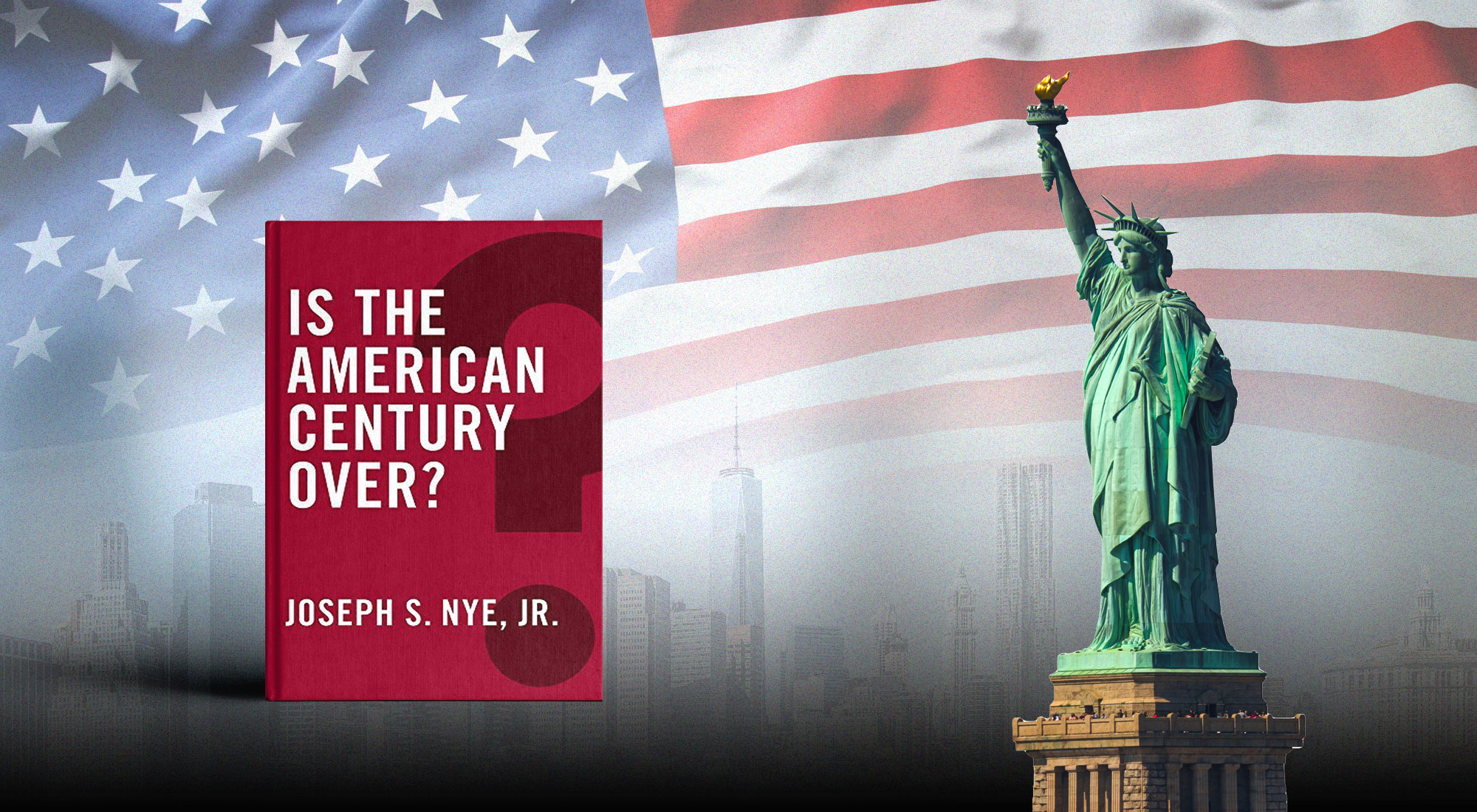The recent border standoff between the U.S. federal government and the state government of Texas (from March 2021-present)[1] gave the impression that the only issue pertaining to the former’s relationship with Mexico revolves around immigration and border security. Though migration is one of the most significant issues, the relationship between Texas and Mexico is much broader and more diverse than migration and border security.
Texas has the most important international relations with Mexico, and the Lone Star State is the most interdependent federal entity in the United States with regards to its relations with Mexico, which include, inter alia, all issues of bilateral relations, immigration, border security, economic cooperation, education and culture, public health, energy, environment, and political differences. In addition, if Texas were a country, it would be second only to the U.S. and more important than Canada, China, Germany, the UK, or Spain when it comes to international relations between Mexico and many of its sub-state or non-central governments (NCGs).[2]
That pattern of interdependence between Texas and Mexico can be explained by their long-shared history,[3] shared heritage and culture, deep economic interests and relations, and great geographical contact across the largest U.S.-Mexico physical border. Additionally, the growth in interactions between Texas and Mexico is a consequence of deepening globalization in the international system and economic integration in the areas of trade and finance which have been institutionalized through North American Free Trade Agreement (NAFTA) and the United States-Mexico-Canada Agreement (USMCA).[4]
The objective of this insight is to conduct a current analysis of the international relations of Texas and Mexico, with a special focus on the impact of the current border crisis between Texas and the U.S. federal government on these relations. The scope of this paper covers Texas’ relations with both the federal government of Mexico and Mexican NCGs.
Non-central Governments’ Involvement in International Relations: The U.S.-Mexico Context
Although there are many terms for non-central governments (NCGs) or regions’[5] participation in international relations, the most commonly used is paradiplomacy.[6] Paradiplomacy refers to the direct or indirect international activities of regions through the establishment of formal and informal bilateral or multilateral contacts with foreign public or private entities.[7] NCGs engage in foreign affairs with the aim of representing themselves to other international actors and in pursuing their own specific (economic, cultural, and political) international interests, which could be independent of, or even antagonistic to, the national interest as that may be defined by central governments.[8]
The paradiplomatic activities can either be in concert with and complementary to, parallel to, or in conflict with parent-state diplomacy. It is imperative to examine and evaluate on a policy-by-policy basis the patterns of relations between paradiplomacy and national foreign policy.[9] Paradiplomacy, therefore, refers to the ways in which NCGs or regions conduct international relations,[10] whether transborder, transregional, or global in orientation.[11] Texas’ actions toward Mexico (and Mexican states) fall into the transborder and transregional categories.
Typically, constitutions are not conducive to regions operating in the international arena; they tend to make international affairs the reserved domain of the central government. Certain constitutional frameworks are especially stringent in this regard, which makes it difficult for NCGs to operate outside of them. Foreign affairs are under the purview of the federal government in both the U.S. and Mexico.[12] The Constitution of Mexico lists foreign policy and the capacity to execute international treaties, as well as modifying, amending, or suspending these treaties, with the authorization of the Senate, among the powers and duties of the president. Similarly, the U.S. Constitution gives Congress the power to “regulate Commerce with foreign Nations, and among the several States, and with the Indian Tribes.” The U.S. Constitution explicitly forbids the states from entering “any treaty, alliance, or confederation” or, “without the Consent of Congress, … [from] enter[ing] into any Agreement or Compact with another State, or with a foreign Power, or engage in War, unless actually invaded, or in such imminent Danger as will not admit of delay.” Article II of the constitution gives the president the power “by and with the Advice and Consent of the Senate, to make Treaties … and he shall nominate, and by and with the Advice and Consent of the Senate, shall appoint Ambassadors, other public Ministers and Consuls.” Both the U.S. Constitution and the Mexican Constitution reserve powers not granted expressly to the federal government to the states.[13]
Although a region’s constitutional and legal status is so important regarding its ability to pursue foreign policy, this is by no means straightforward. For one thing, NCGs may cultivate environments within their jurisdictions that either encourage or discourage a wide range of internationally relevant activities. This applies to both Mexico and the U.S. states. Additionally, NCGs can also engage in extra-constitutional foreign activities, bypassing constitutional strictures concerning the international involvement of the regions. Quebec represents a classic case in this regard. The Belgian regions and the German Länder secured their right to act internationally over time. Then the basic laws had to be amended accordingly. Chinese provinces represent another example, as over the years, some Chinese provinces have joined the group of the most proactive actors in paradiplomacy.[14] Therefore, the actual practice of foreign affairs by countries displays more variety than formal constitutional structures.
While there have been instances of U.S. states participating in foreign affairs since 1787, the participation has been rising since the 1970s, with Mexican states following in the 1990s.[15] Growing globalization in the late 1970s and the signing of the NAFTA in 1994 generated incentives for Texas (and other U.S. states) to increase their international activities, promote their exports, attract foreign direct investment, and seek international development cooperation to enhance local welfare. Globalization and further democratization of Mexico’s political system in the 1990s created the spaces and incentives for Mexican states to participate in international relations, with the objective of advancing their own interests and development. Between 2005 and 2020, Texas signed 90 inter-institutional agreements (IIAs) with its Mexican counterparts. This makes up almost 33% of the total IIAs signed by Mexican states with their American counterparts. These agreements are of an economic nature as Texas’s paradiplomacy is more economically oriented.[16] It is particularly worth noting that the number of IIAs that have been signed between Mexico states and Texas is close to the total number of those concluded with Spain and more than with any other country in the world.
Border issues are high on the list of reasons for U.S. border and Mexican states to exercise transborder paradiplomacy. The governors of the four American states and six Mexican states along the U.S./Mexico border meet annually at the Border Governors Conference, which has been held since 1980. The conference provides a forum for cooperation between the states that together represent one of the most important transborder regions in the world.[17]
Central Issues in the Texas-Mexico Relationship
The issue of illegal immigration along the Texas-Mexico border is currently the primary concern for Texas, as it shares a significant portion of its border with Mexico (2,018 km). This has made it an important international issue, given the significant rise in the number of illegal immigrants in recent years. Since the Treaty of Guadalupe Hidalgo in 1848, which established the border, Texas has struggled with a significant influx of undocumented immigrants who cross its boundary with Mexico.[18]
Over the past three years, the number of people trying to cross the southern border of the state of Texas into the U.S. has increased at unprecedented levels. In December 2023 alone, Border Guard agents recorded 302,000 encounters (including arrests and immediate expulsion), a new record. By comparison, from 2013 to 2019, the monthly average was 39,000.[19]
Texas has been actively involved in developing immigration policies, including border security, addressing illegal immigration, and figuring out how to deal with it. It takes border security seriously due to concerns regarding drug trafficking, human smuggling, and other illicit activities. All in all, Texas has gradually changed from having pro-immigration policies to generating an anti-immigrant environment due to its alignment with the Republicans and the relatively limited involvement of Latinos in local and state political institutions, despite their rapid growth.[20] Texas’ unilateral immigration policies have led to a rift in its relationship with Mexico and created a crisis in intergovernmental relations with the U.S. federal government.
In March 2021, Texas Government launched Operation Lone Star, a state‐level initiative to deploy the Texas National Guard, the Texas Department of Public Safety, and other law enforcement personnel to support border security. Under Operation Lone Star, the state has spent or allocated billions of dollars to deploy state troopers and National Guard members to the border, arrest migrants for trespassing on private land, bus migrants to northern cities, and erect barriers along the Rio Grande River, including fences, buoys, and razor wire.[21]
Concerned about the buoys in particular, the Mexican government claims that they violate the 1944 Treaty between Mexico and the United States for the Utilization of Waters of the Colorado and Tijuana Rivers and of the Rio Grande and pose a threat to the lives of migrants.[22] Texas Governor Greg Abbott built a military base close to the border to enhance the National Guard’s adaptability and manage cross-border operations between Texas and Mexico. It has been observed that building fences and barbed wire across the border does not effectively secure the border, because smugglers frequently breach sections of the border wall to let immigrants into the U.S.[23]
To tackle this issue, a new Texas law called ‘Senate Bill 4’, was issued, which allows state officers to arrest and deport individuals suspected of crossing the border illegally. Both the U.S. and Mexican federal governments warned against the significant adverse effects of Senate Bill 4 on the U.S.-Mexico relationship.[24] The law was not enacted in early March 2004, as it was scheduled, because a federal court in Austin temporarily blocked its implementation in late February 2024, on the basis that the law violates the federal government’s immigration enforcement power and will harm U.S. foreign policy. A few days later, the Supreme Court put the law on hold until at least 13 March, when the court is set to examine it again.[25]
In a series of legal battles with the federal government related to border security and immigration enforcement, Texas is pursuing several cases on several legal fronts. On 22 January 2024, the U.S. Supreme Court passed a decision allowing federal agents to cut razor wire at the border, installed by Texas. But Texas challenged the decision and did not allow federal border patrol agents access to the borders. Governor Abbott ordered more razor wire installed near the Rio Grande River after the decision. More seriously, he argued that the record number of migrant arrivals at the Texas border constituted an “invasion” that Texas had the power to defend itself against under the U.S. Constitution.[26] Abbott’s defiant position was backed by 25 Republican governors, former U.S. President Donald Trump, U.S. House Speaker and nearly all of Texas’ congressional delegation.[27]
Texas’ standoff with the federal government is fed by fierce political fighting between the Democrats and Republicans over immigration and border security. Therefore, tense intergovernmental relations between the two parties also reflect the role of partisanship plays in the relations. Republicans want to keep voters focused on the border because they view it as a winning issue. State leaders are trying to present themselves as taking aggressive action while putting the Biden administration in a tough spot.[28]
Political tensions are present between Texas and the Mexican federal government in areas of border security and migration.[29] However, the border crisis has prompted some collaboration between Texas and Mexico. For example, in April 2022, Governor Abbott signed memoranda of understanding with the governors of the Mexican border states to try to rein in the skyrocketing number of illegal crossings.[30]
Beyond migration, increased cross-border manufacturing, agricultural value chains, and even migration have created a “cosmopolitan border region with many more dual citizens, business ties, social networks, and binational civic groups.”[31] Hundreds of thousands of people cross the border every day to work, attend school, visit family members, and take part in daily lives.[32] As an indicator of the importance of its relationship with Texas, Mexico keeps 11 consulate general offices in Texas alone.[33] The Mexican states of Michoacan, Guanajuato, Puebla, and Zacatecas have established representation offices in Texas.[34] The State of Texas Mexico Office, established in 1971, has two branches in Mexico. The office seeks to attract Mexican trade and investment, and serves as the link between Mexico’s business community and Texas.[35] This is the only trade and investment office that the state of Texas has established abroad.[36]
Texas-Mexico cooperation has increased substantially in the economic realm. Texas and Mexico are crucial trade partners. Trade and investment between Texas and Mexico are well managed and are creating prosperity for both partners.[37] The Texas-Mexico border represents ~64% of the entire U.S.-Mexico border and accommodates 28 of the 49 vehicle and pedestrian border crossings between the two countries.[38] Texas has eclipsed all other states in bilateral trade with Mexico. Mexico and Texas ranked first as each other’s leading market for both imports and exports, ahead of any other state or country. In 2022, trade between Texas and Mexico totaled $285.6 billion, with $144.3 billion in exports and $141.3 billion in imports. The main Texas’ exports to Mexico include computer and electronic products, transportation equipment, petroleum and coal products, chemicals, and electrical equipment. It is hard to underestimate the importance of these trade partners, estimated to reach together an annual GDP of $3.8 trillion (estimate. 2022), making them, as a hypothetical single entity, the world’s fifth largest economy.[39] In 2019, 68% of trade between the U.S. and Mexico was passing through the Texas border. [40]
The cross-border investment has grown substantially. Private sectors on both sides of the border have driven trade and investment between Texas and Mexico.[41] There are 463,000 jobs in Texas that depend on trade with Mexico.[42] In the last decade, Mexican companies reported 38 investment projects in Texas, $2.9 billion in capital investments, and more than 5,400 new jobs. During the same period, Texas companies reported 98 investment projects in Mexico, $13.7 billion in capital investment and more than 31,800 new jobs. Mexico is the 12th-largest source country for FDI projects into Texas and the ninth-largest source for new jobs created by FDI. [43]
Texas and Mexico are highly interdependent in terms of energy. The U.S. state has made energy investments in Mexico. However, the state-centered energy policy adopted by the Mexican government under President Lopez Obrador negatively impacts foreign investors.[44]
The relationship between Texas and Mexico involves other issue areas such as public health, and border infrastructure. Nonetheless, one of the most prolific areas of cooperation between Texas and Mexico is educational and cultural cooperation.[45] The relationship between Texas and Mexico has a bold environmental dimension that requires coordination and cooperation to address issues such as air and water quality along the border, natural resource preservation, especially groundwater resources, pollution, shared ecosystems, and environmental concerns of cross-border migration. Climate change exacerbates these issues, emphasizing the need for joint efforts to address them. For example, the Texas Commission on Environmental Quality is involved in several agreements and programs with Mexican states. Another example is the creation of the Binational Air Quality Fund by the states of Texas, Chihuahua, and New Mexico and the city of Ciudad Juárez to address issues with the El Paso Air Basin.[46]
The Future of the Texan-Mexican Relations
Despite the crisis in intergovernmental relations in the U.S. between Texas and the federal government and its crossborder ramifications, a general forecast of future Texas-Mexico relations is for continuity, such that interdependence will continue to rise. Texan leaders’ lobbying efforts (especially on trade) are typically supported by the U.S. Chamber of Commerce and its affiliates. Texas and Mexican states have more partnerships with economic development organizations that continue to professionalize, create their own policy platforms, and become action-oriented overseas trade missions.
Security and immigration concerns in Texas-Mexico relations have increased, but economic variables will likely outweigh these issues in the long run. We expect a future that reflects the current trend in terms of increasing the level of relationship between the two parties and being supported by private actors.[47] Put differently, the future of Texas-Mexico relations will involve a strengthening of the last decades of economic integration, which has benefited both Texas and Mexico economically.
That increasing trend in the Texan-Mexico relationship doesn’t contradict an emerging trend in Texas’ paradiplomacy: that is, Texas’s international activities become more global-oriented and seek to reshape the agenda within the dynamics of federalism.
However, if isolationist and nationalistic tendencies prevail in policy (not just rhetoric), it is possible that trade and capital flows across the Texan-Mexican borders will be dramatically and negatively affected. This worst-case scenario is unlikely under the current U.S. Biden administration because protectionist and economic nationalism would have to be embraced by establishment actors across government, corporate America and Mexican businesspeople, the media, academia, and religious institutions. It is important to remember that although former president Trump threatened to shut down the U.S.-Mexican border with the Covid-19 pandemic, he never followed through on his threat, in part because of the pushback from members of his own political party and the business community that has traditionally supported it as well; the border remained open for the flow of goods, services, and capital throughout the Covid-19 pandemic.[48]
The worst-case scenario is also unlikely given the degrees of institutionalism in the bilateral relationships — however informal and flexible — between the governments of Texas and Mexico as well as the government of Texas and Mexican NCGs. Additionally, since 1994, there has been significant growth in the deep relationships and networks within the business communities of both Texas and Mexico. Even if protectionist and nationalistic policies were pursued at the national level in both countries under the Trump and Mexico’s Lobez administrations, sub-state political and business leaders on both sides of the border, especially in Texas and California, continued to advocate for a strong partnership that was primarily determined by economic variables as well as cultural, political, and security concerns.[49]
Conclusion
This insight attempts to analyze the various aspects of the Texas-Mexico relationship. In the process, it examined the growing paradiplomacy in the U.S.-Mexico context. It also addressed the main issues in the relationship between Texas and Mexico. Lastly, the study evaluated the impact of the Texas-U.S. tense intergovernmental relations over immigration enforcement and border security on the future of Texas-Mexico relations.
The study found that the relationship between Texas and Mexico is complex. First of all, they are highly interdependent on each other in terms of trade, investment, energy, immigration, and welfare, among others. Second, Texas and Mexico have divergent and even antagonistic positions in the areas of migration and border security. More importantly, Texas-Mexico relationship is about more than just bilateral ties and migration. The relationship between Texas and Mexico is particularly rich in all forms of U.S.-Mexico integration. However, economics is its main focus. The main cause of the widespread expectation of relations is that economic interdependence between Texas and Mexico will keep rising in the future. Texas-Mexico relationship is multifaceted. In addition to the interdependent relationship between Texas and Mexico, there are various ties linking the Lone Star State with other Mexican states.
Though the tense intergovernmental relations between the Texas and U.S. governments won’t have much impact on the current or future level of interdependence between Texas and Mexico, it has two main implications. The level of institutional development necessary to deal with the complexity and depth of the issues that connect Texas and Mexico has not yet been achieved. And as a result of the tense intergovernmental relations, Texas’ paradiplomacy has followed California’s example and become more global oriented.
[1] J. David Goodman, “A Legal Showdown on the Border Between the U.S. and Texas: What to Know,” The New York Times, February 29, 2024, https://shorturl.at/lGK13.
[2] Jorge A. Schiavon and Rafael Fernández de Castro, “Introduction,” in The International Relations of California and Texas with Mexico and the World, ed. Jorge A. Schiavon, and Rafael Fernández de Castro (London: Routledge, 2023), 6-7.
[3] Texas was part of Mexico until it gained independence in 1836 and joined the U.S. as the twenty-eighth state of the Union nine years later.
[4] James Geber, “Texas’s International Relations with Mexico and the World,” in The International Relations, 93.
[5] The term ‘region’ is used to refer to the intermediate level of government, including cantons, provinces, states, landers. In other words, ‘region’ refers to the tier of government between the local level and the national level, irrespective of whether the country is federal, or unitary.
[6] There are several other ways to coin the same phenomenon, including “substate diplomacy,” “subnational foreign affairs,” “substate diplomacy,” “multilayered diplomacy,” “constituent diplomacy,” “decentralized international cooperation,” “local government external action,” “local diplomacy,” “subnational foreign policy,” “local foreign policy,” “gubernatorial foreign policy,” “regional diplomacy,” “plurinational diplomacy,” “pos- diplomacy,” and “microdiplomacy.”
[7] Sultan Alrubaei and Ayman Eldessouki, “Towards COP28: Green Paradiplomacy and Climate Change,” in Climate Change: Dimensions and Future Directions. ed. Mohamed Al-Ali & Mohamed Aldhuhoori (Abu Dhabi: Trends Research & Advisory, 2023), 15-29.
[8] Ayman Eldessouki, “Paradiplomacy: The International Agency of Regional Governments- A Comparative Study of Some Regions” (PhD diss., Cairo University, 2008), 23-29.
[9] Ayman Eldessouki, “Domestic Structure and Subnational Foreign Policy: An Explanatory Framework,” Review of Economics & Political Science 4, no. 1 (January 2019), 8.
[10] P. Soldatos, “An explanatory Framework for the Study of Federated States as Foreign-policy Actors,” in Federalism and International Relations: The Role of Subnational Units, ed. H. Michelmann and P. Soldatos (Oxford: Clarendon Press, 1990), 36-37.
[11] Ivo Duchacek, “Perforated Sovereignties: Towards a Typology of New Actors in International Relations,” in Federalism and International Relations, 47-48.
[12] Eldessouki, “Domestic Structure,” 8.
[13] Carine Martinez, “Texas-Mexico Relationships: Understanding the Ties,” Texas Policy Foundation, October 4, 2022, https://shorturl.at/joxI4.
[14] Eldessouki, “Domestic Structure,” 10-12.
[15] Jorge A. Schiavon and Samuel Lucas McMillan, “The International Relations of State Governments in the U.S.-Mexico Relationship: California and Texas as Barometers of Paradiplomacy,” in The International Relations, 26.
[16] Schiavon and McMillan, “The International,” 27-29.
[17] Texas Secretary of State, “Border Governors Conference,” accessed March 7, 2024, https://shorturl.at/swACH.
[18] Aljazeera, “Texas is a “rebellious” American state on the border with Mexico,” February 1, 2024, https://shorturl.at/bjqMX.
[19] Lauren Gambino, et. al., “The Unprecedented Situation at the US-Mexico Border – Visualized,” The Guardian, February 7, 2024, https://2h.ae/KEBd.
[20] Rafael Fernández de Castro and René Zenteno, “Immigration Enforcement, Sanctuary Policies and Demographic Change in California and Texas: 1990-2021,” in The International Relations, 221-223.
[21]Elizabeth Findell, “Federal Court Blocks Texas Immigration Law,” The Wall Street Journal, February 29, 2024, https://shorturl.at/louM1.
[22] “Ecosystems near Texas-Mexico border ‘choking’ from efforts to stop migrants,” The Guardian, August 11, 2023, https://2h.ae/XWQa.
[23] Camilo Montoya-Galvez, “Migrants cross U.S. border in record numbers, undeterred by Texas’ razor wire and Biden’s policies,” CBS News, December 24,2023, https://2h.ae/PnTI.
[24] Maria Sacchetti and Arelis R. Hernández, “Supreme Court keeps Texas migrant law on hold until at least March 13,” The Washington Post, March 4, 2024, https://shorturl.at/oHOQ9; “Mexico to Challenge Texas’ New ‘Inhumane’ Migration Law, President Says,” Reuters, December 19, 2023, https://shorturl.at/aqFJY.
[25] J. David Goodman, “Supreme Court Agrees to Weigh in on Texas Immigration Law,” The New York Times, March 4, 2024, https://shorturl.at/aDJUW.
[26] Megan Cardona, “Texas and the Federal Government are in a Standoff at the Border. How Far Can It Go?” KERA News, February 12, 2024, https://shorturl.at/myAHV.
[27] Robert Downen and Uriel J. García, “Texas’ Standoff with the Feds in Eagle Pass is Igniting Calls for Secession and Fears of violence,” The Texas Tribune, January 30, 2024, https://shorturl.at/iyLPW.
[28] Madlin Mekelburg, “Texas Picks a Fight with Biden over Powers at the Border,” Bloomberg, February 29, 2024, https://shorturl.at/pxzA4.
[29] Tony Payan, “Too Close for Comfort: The Restive Border as a Symbol of Texas-Mexico Relations,” in The International Relations, 181.
[30] Martinez, “Texas-Mexico,” 6.
[31] Geber, “Texas’s International Relations,” 96.
[32] Christopher S. Chivvis, “The U.S.-Mexico Relationship is about More Than Migration,” Carnegie Endowment for International Peace, December 14, 2023, https://shorturl.at/npC57.
[33] Texas Secretary of State, “Consular Offices in Texas,” accessed March 7, 2024, https://shorturl.at/qzGHW.
[34] Rodrigo Tavares, Paradiplomacy: Cities and States as Global Players (New York: Oxford University Press, 2016), 46.
[35] The State of Texas, “State of Texas Mexico Office,” accessed March 7, 2024, https://shorturl.at/mnwzO.
[36] Christopher Wilson, “Working Together: Economic Ties between the United States and Mexico, Wilson Center,” accessed March 1, 2024, https://2h.ae/xSKp.
[37] Geber, “Texas’s International Relations,” 96-97.
[38] Martinez, “Texas-Mexico,” 7.
[39] In 2022, Texas’ GDP (nominal) was estimated $2.4 trillion (ranked 8th GDP in the world if it were a country), while Mexico’s GDP was estimated $1.4 trillion. See: The Texas Economic Development & Tourism Office (EDT), “Texas & Mexico Trade and FDI,” revised December 2023, https://shorturl.at/isEVW.
[40] EDT, “Texas & Mexico.”
[41] W. Michael Cox and Richard Alm, “Trade and Investment in the Texas-Mexico Relationship,” in The International Relations, 138.
[42] Martinez, “Texas-Mexico,” 11.
[43] EDT, “Texas & Mexico.”
[44] John McNeece and Alan Sweedler, “Energy in the Mexico-Texas and Mexico-California Relationships,” in The International Relations, 199.
[45] Martinez, “Texas-Mexico,” 13.
[46] “Ecosystems near Texas-Mexico”; Martinez, “Texas-Mexico,” 14.
[47] Schiavon and McMillan, “The International Relations,” 26.
[48] Schiavon and McMillan, “The International Relations,” 43.
[49] Schiavon and de Castro, “Introduction,” 10.









